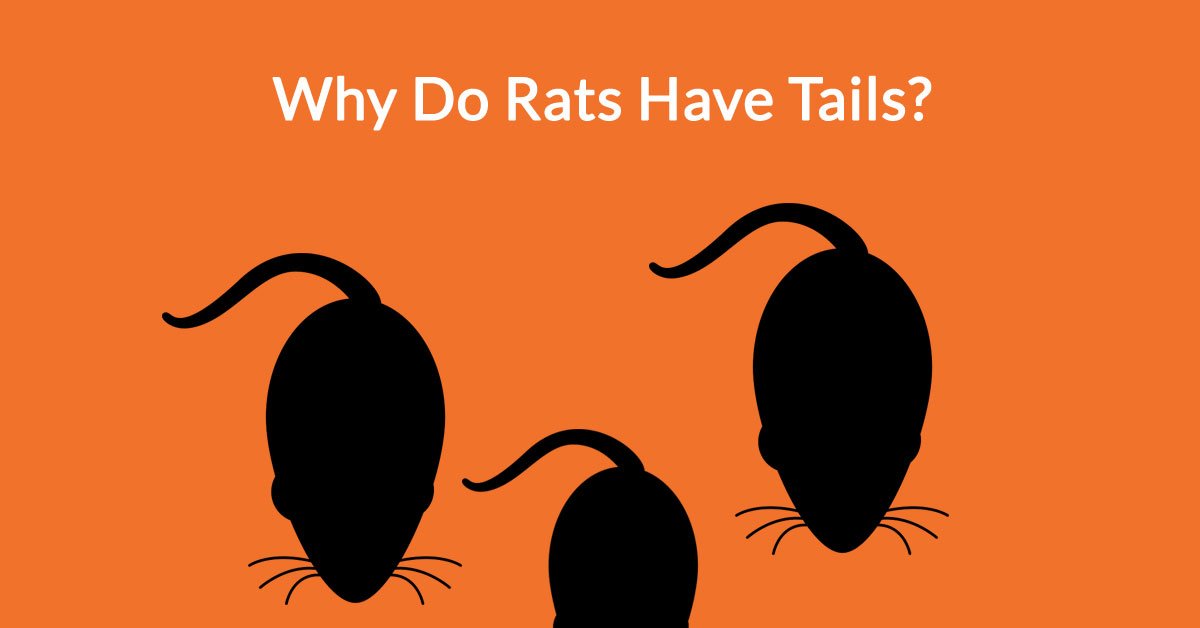One of the rat's most distinctive features is its long, hairless tail. This slimy-looking tail is one of the most common things that people find disgusting about these pests. Although the rat's tail itself is completely harmless, there are several ways that a rat can kill you so being repelled by rat tails isn't entirely irrational.
The thought of a greasy rodent tail can make your skin crawl, but why do rats have tails in the first place? You might be surprised to learn that a rat's tail has more purposes than grossing out humans. The rat's tail has evolved over thousands of years to become a perfect accessory for this small animal's survival in the wild.
Why Do Rats Have Tails?
At first glance, it might seem that a rat's tail is nothing but a hindrance because it is easy for predators to grab, vulnerable to injury and can become stuck in obstacles. However, a rat's tail has several key functions that help the animal to survive and thrive in its environment. The main functions of a rat's tail are temperature regulation, balance and thwarting predators.
The rat's tail is a perfect heat loss organ, and temperature control is especially important for rats because they lack the ability to sweat. They can even control the blood vessels in their tails to adjust for hot or cold weather. The blood vessels open up to allow more blood into the tail when temperatures rise, which results in more heat dissipation from the rat's body. During colder weather, the vessels constrict to keep the rat's blood in the interior of its body and preserve heat.
If you have ever observed a rat crawling along a fence, line or wire, you probably took notice of this animal's superb ability to balance on narrow and high surfaces. That keen sense of balance is made possible by the rat's long, agile tail. In fact, the rat's acrobatic balancing capabilities may be why your rat traps are constantly turning up empty. A rat can easily dine and dash a conventional snap trap, so consider using an automatic trap that humanely kills with a blast of carbon dioxide.
A rat makes a tasty snack for many predators, and evading these carnivores is an important part of a rat's survival strategy. One way they can avoid becoming dinner for a feline, bird or snake is by distracting the predator with their tails. An injury to a rat's tail is much less serious than an injury to its body, so encouraging the predator to grab the tail can offer a means of escape. Even if part of the tail is amputated by the predator, the rat can still get away with its life.
Rat tails might look like simple appendages on the surface, but below the skin is a complex structure. Like the tails of most mammals, the rat's tail is an extension of its vertebral column. The rat's tail consists of a core layer of bone surrounded by tendons and covered by skin. Many arteries and veins run through the tail between the tendons. These blood vessels make the rat's tail very sensitive to its environment and aid in temperature regulation.
Why Is a Rat's Tail So Long?
The average rat's tail is nearly as long as its body and noticeably longer than the tails of many other rodent species. One reason for the relatively long length of the rat's tail is that it creates more surface area for heat dissipation. The rat can also curl its tail around its body for warmth. In fact, the length of a rat's tail is partially determined by the climate it grew up in! Another reason for the rat's tail length is to aid in balancing and climbing by allowing the rat to wrap its tail around objects. A rat can also use its long tail to prop itself up for extra reach when foraging for food. Why Are Rat Tails Hairless?
A rat's tail lacks hair or fur for two main reasons. The first is more efficient heat dissipation. Without insulating fur or hair, the tail can lose heat more easily. The second reason for the hairless nature of the rat's tail is grip. Just like human hands, the rat's hairless tail is perfect for hanging on to surfaces. Imagine how much more difficult it would be to climb a ladder or play on monkey bars while wearing knitted mittens. That's how much harder it would be for a rat to climb and balance with a furry tail.
Does Every Rat Have a Tail?
Most rats have tails, but there is a rare genetic mutation that results in a few individuals being tailless. This mutation is linked to other abnormalities and often results in a rat that only lives for a few days. A tailless rat that reaches adulthood still deals with health problems because it cannot effectively regulate its body temperature. A tailless rat in the wild is also more vulnerable to predators and accidents.
When it comes to domesticated rat breeds, some breeders attempt to produce hairless types both for scientific studies and because they are more appealing as pets. However, a domesticated rat without a tail faces the same health consequences as its wild cousins. A tailless pet rat will need to be kept in a temperature-controlled environment and avoid toys like wheels and ropes that can injure it due to its poor balance.
If a rat's tail is so perfectly adapted to helping it evade predators and traps alike, how do you deal with a rat infestation? The answer is to overcome the rat's natural advantages with a humane trap that is impervious to the extraordinary abilities of its tail. The A24 Automatic Trap attracts a curious rat with the promise of food, then quickly and humanely kills it. The rat has no chance to grab the bait and escape like it can with a snap trap.
Automatic traps are also chemical-free and environmentally responsible, plus each canister kills up to 24 rats. They are easy to install and require little maintenance, especially if you rely on scavengers to remove the carcasses. If you want to finally rid your property of the pesky rat and its tail, visit automatictrap.com to purchase a better rat trap today.



